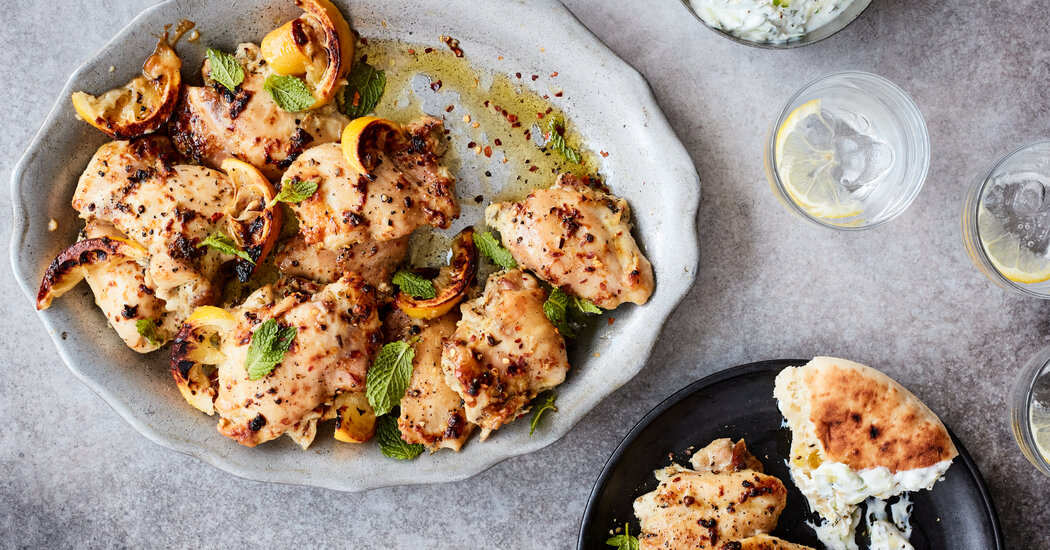
My kids’ babysitter asked me the other day how I make my chicken. The girls love it, she said — one of the most gratifying things you can hear when you cook for young kids, who are tiny, tyrannical critics. (Here are more ideas for what to feed them.)
My secret is that I use a lot of salt. And I don’t mean an inappropriate or shocking amount of salt; just the right amount to make the chicken taste maximally chickeny, which is more salt than most people think to use. (Most home cooking needs more salt. Even desserts need more salt!)
I also season the chicken all over. Here’s how to do this so you avoid making a mess and repeatedly washing your hands: Have a pile of salt ready in a bowl or salt cellar. Pick up a piece of chicken with one hand and hold it midair over a cutting board. Use the other hand to grab the salt and sprinkle it on both sides, still midair. Don’t put the chicken hand in the salt bowl, or the salt hand on the raw chicken. That’s it. (For the best primer on how to use salt, turn to Samin Nosrat’s seminal cookbook “Salt Fat Acid Heat.”)
I usually roast bone-in chicken thighs salted this way, brushing the skin with oil, then cooking them at 425 degrees and checking for doneness at 30 minutes. But a superb and more exciting (and not at all harder) chicken recipe is below, along with noodles and other delicious options for the week. Write to me anytime at dearemily@nytimes.com — I love to hear from you.
2. Singapore Noodles With Charred Scallions
Hetty McKinnon adds sweet scallions to her meatless version of the classic stir-fried rice noodles with curry powder, which despite the name likely originated in Hong Kong. Play around with the vegetables if you like, as long as they cook quickly — this one comes together fast.
3. Kefta
Nargisse Benkabbou’s kefta (the Moroccan Arabic term for kofta) is simple and alluring: She blends parsley, cilantro, mint, cumin and sweet paprika with ground beef or lamb, threads the mixture onto skewers, then grills. You could use a grill pan instead, or the broiler, or even just shape it into patties and cook them in a skillet.
4. Creamy Chive Pasta With Lemon
This Ali Slagle recipe is more grown-up than your typical creamy pasta, though not kid-unfriendly. It leans on chives as an ingredient, not a garnish, and crème fraîche, too (though you could use heavy cream or ricotta). Change up the alliums if you like.




